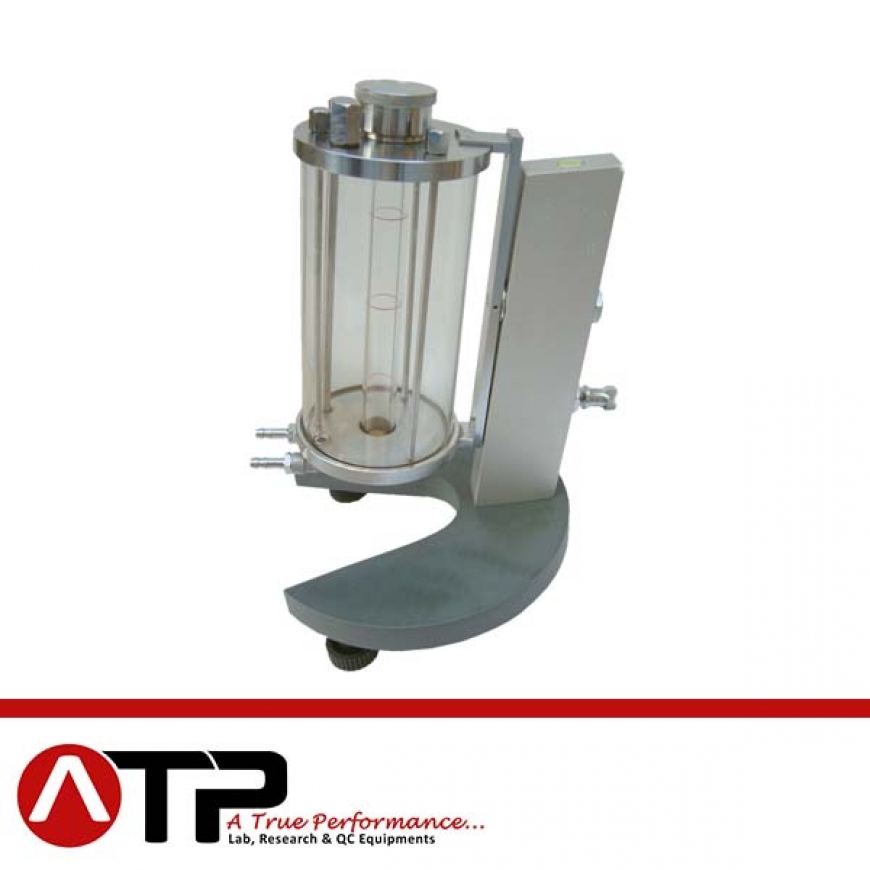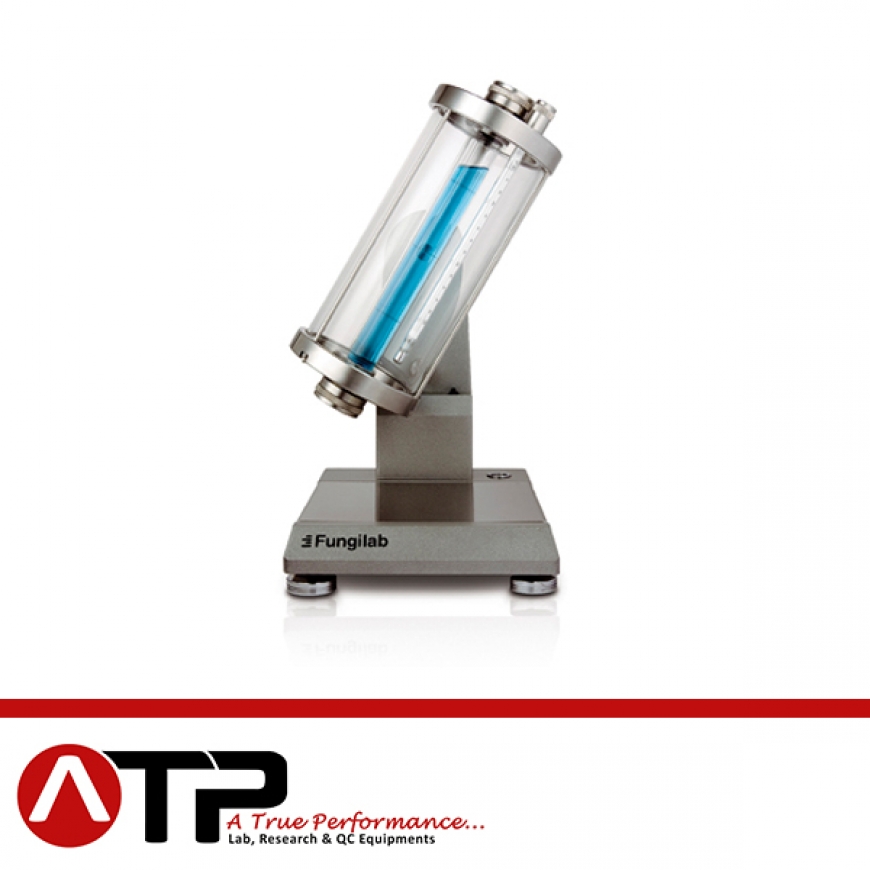Quick Find Products
Hoppler Viscometer
For determining the dynamic viscosity of Newtonian liquids using the Hoppler falling-ball viscometer, including a method of calibrating the viscometer
Suitable for viscosity 0.5 a 100.000 mPa*s (cP). Mounted on support with levelling screws and bubble level, fitted with stop pin which allows the viscometer to reverse. Calibrated fall tube tube with two maximum level notches and an intermediatelevel one, equipped with 6 gauged balls: 1+2=borosilicate glass, 3+4=Ni-Fe, 5+6=steel. Pyrex glass jacket for thermostatic bath with covers, neoprene gaskets, connections for the circulation of the thermostated liquid from the thermostatic bath. With certificate at 20°C.
- Temperature: from -20 to +120°C (-4 to 248°F)(with external unit)
- Power supply:220V 50/60Hz (for 330)
- Power: 110W (for 330)
Höppler Viscometer
The Viscoball measures accurately the viscosity of transparent Newtonian liquids and gases (with a special glass ball).
Features
New
Changeable angle
Fixed angle
Complies with
DIN 53015 / ISO 12058
Kit of 6 balls
Wide viscosity range covered
Simple thermostatic
Measuring with easy conection to our thermovisc series
Viscosity readings
Dinamic (cP or mPa·s)
Kinematic (cSt)
Reproducibility: 0.5%
Comparability: 1%
Viscosity range
0.5 - 10^5 mPa·s (cP)
0.5 - 105 mPa·s (cP)
- High accuracy through improved visibility of falling ball.
- Minimized test time due to accurate return run of the ball.
- Reduced cost of ownership through increased life time of falling tube.
- Extended re-calibration periods through improved bearing support.
The VISCO BALL viscometer is mainly used for low viscosity substances such as used in:
- Mineral oil industry (oils, liquid hydrocarbons).
- Food industry (sugar solution, honey, beer, milk, gelatine, fruit juice).
- Chemical industry (polymer solutions, solvents, resin solutions, latex dispersions, adhesive solutions).
- Cosmetic/Pharmaceutical industry (raw materials, glycerine, emulsions, suspensions, solutions, extracts).
- Petroleum industry (light crude, machine oil, crude petroleum).
- Fuels (petrol, diesel oil, paraffin).
- Paper industry (emulsions, pigment dispersion, paper additives).
- Paints and varnishes (printing inks, varnishes, water lacquers, inks).
- Detergents (liquid washing agents, washing-up liquids, tenside solu- tions).
Measuring principle
The rolling and sliding movements of a ball through the sample liquid are timed in an inclined cylindrical measuring tube. The sample viscosity is correlated to the time a ball requires to traverse a definite distance. By turning the measuring tube upside down again the return of the ball may also be used for an additional measurement applying the return cons- tant. The test results are given as dynamic viscosity in the internationally standardized, absolute units of mPa·s.
Materials
Balls 1,2 and G, Borosilicate glass
Balls 3 and 4, Nickel iron alloy
Balls 5 and 6, stainless steel
The instrument is supplied with 6 balls, control thermometer (-1 to +26ºC) cleaning tools, calibration sheet and instruction manual.





